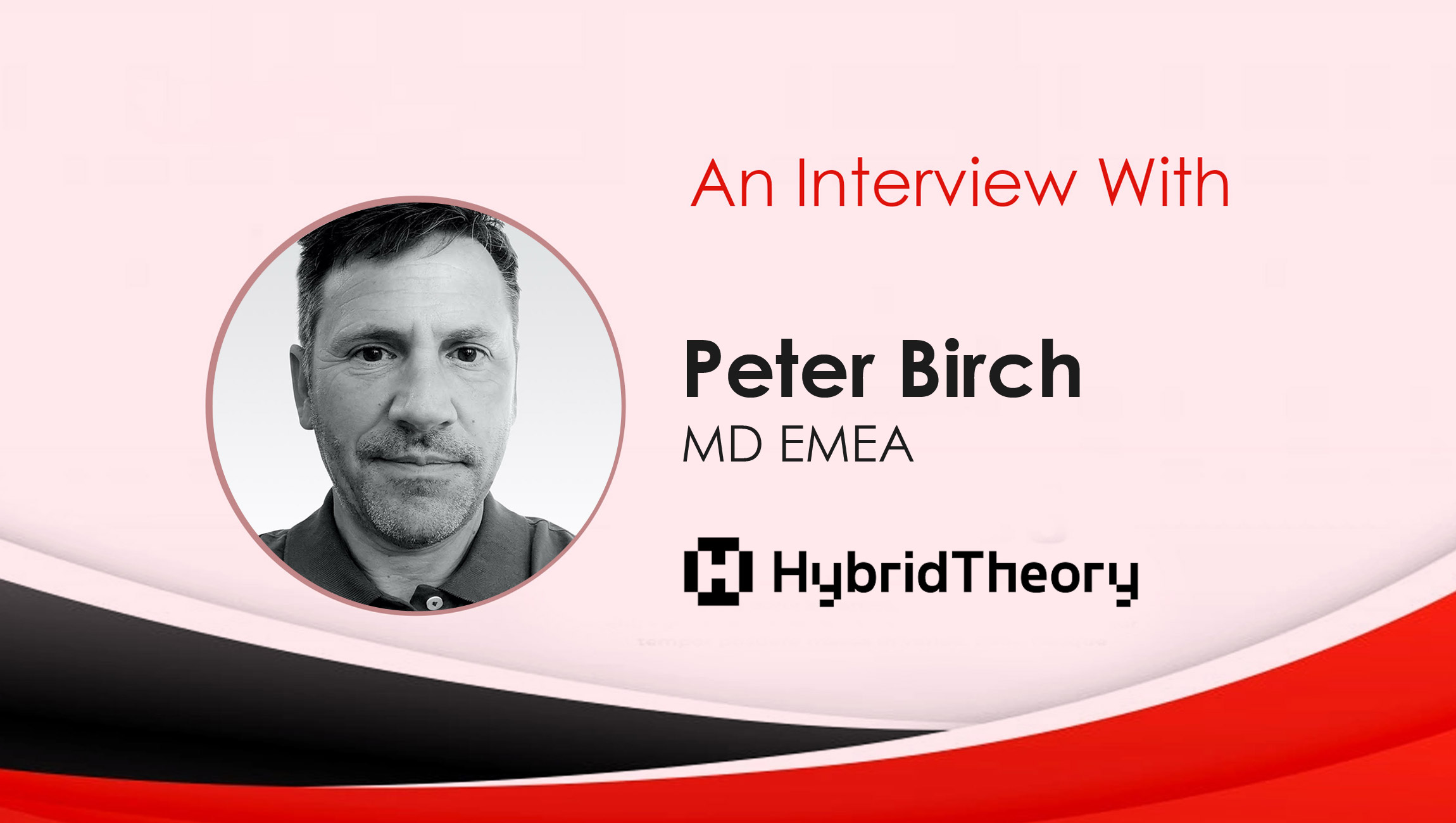Peter Birch, Managing Director at Hybrid Theory, reveals his journey into ad tech and the role that hybrid technologies play in the advertising industry in this quick catch-up:
Welcome to this MarTech Series chat, Peter. We’d love to hear about your journey in the technology space. How did you arrive at Hybrid Theory?
It was at ITV that my journey into digital began. Moving from TV airtime sales, I helped set up ITV’s first foray into digital, launching ITV.com. From there, I helped establish ITV’s interactive and enhanced TV services, as well as working on mobile interactivity.
I then moved to Australia where I set up an award-winning mobile ad network that spanned APAC and led me into the world of data, programmatic and ad tech.
After 13 years, I returned to the UK, seeking a role within adtech, ultimately leading me to my role at Hybrid Theory.
Could you tell us more about your role at Hybrid Theory?
As managing director, I’m responsible for performance and development across EMEA. I support global CEO and commercial leadership teams, helping them execute growth strategies.
Which markets are you targeting? What does your ideal customer look like?
I head up EMEA, and our sweet-spot clients are brands who understand the value of data, and who also focus on performance.
These clients can be broken down into five distinct profiles: those who want to know who their customers are; those who want to scale and target their audiences; those who want to gain efficiencies in media, creative, and sales; those who want to unify their data to one single source of truth; and finally, those who want to grow their market share.
As you can see, all of these use cases tend to hinge on one thing – data.
Could you dive a little deeper into how Hybrid Theory helps these ICPs achieve their goals?
For the first type of client, we help by offering insights into who their customers are, what they do, what they browse, what they share, and when they share it. The data we collect is refreshed every two hours, enabling marketers to capture people in the moment of discovery.
The second type, looking to scale, turns to Hybrid Theory because we have the tools and resources to collect a variety of data sources, even for niche verticals. In fact, we can collect and aggregate up to 3 billion data events per day – half of which are cookieless.
We help our third type to drive efficiencies by providing them with a feedback loop, which enables us to refine audiences in real-time. This means when one of our clients experiences a conversion, we’re able to feed that behaviour back into our custom audiences for continual improvement.
And for those who strive to build one source of truth, we find a lot of them have a wealth of first-party data available but they’re still unsure the best way to use it. So we help by combining first-party data with our contextual and cookieless targeting capabilities for more enriched data sets.
And of course, helping clients with all of these things ultimately helps them grow their market share.
Programmatic advertising has emerged as a game-changer in the digital era. Could you share some insights on how you deliver programmatic solutions to your users?
We deliver programmatic as a managed service because we recognise that a lot of businesses find it quite complex. So, our mantra has always been that ‘we make the complex simple’ to help brands navigate this ecosystem.
In a nutshell, we’re combining data, technology, and media to drive great outcomes for brands – that’s as simple as it gets once you strip away all the jargon.
Please explain what “agile activation” means in the customer journey mapping? How do you sync data-driven agility in activation?
By agile activation, we mean we generate instantaneously both behavioural and contextual audiences for every specific client and use case. As mentioned earlier, we also refresh our audience data continuously. So, instead of static audiences that were interested in a specific topic a few days ago, we focus on the here and now.
How does agile activation improve advertising ROI? Can you share some case studies with us highlighting the improvements or impacts?
We were able to help a global blue-chip tech company discover its target B2B audience through agile activation by combining our proprietary browse, search, and share data with third-party data focused on small businesses.
Meanwhile, we leveraged agile activation to drive Christmas donations for a UK charity by creating custom audiences based on cookieless behavioural data and analysing website visitor behaviour. In parallel, we process billions of data events to create rich audience insights based on users’ browse, search and share history.
In both cases, agile activation not only helped the companies better understand their audience – it also helped deliver solid results against their KPIs. For the tech company, we increased ROAS by 118%. And for the charity, we beat the CPA target by 60%.
What sets Hybrid Theory apart from other partners who deliver programmatic solutions?
What sets us apart is our laser focus on ROAS and our ability to build and scale unique audiences for every campaign that we run. All of our audiences are fully customised and bespoke. We’ve been doing cookieless for years, so we’re well past the test-and-learn phase. Our years of experience and expertise make it easy for us to identify and target cookieless audiences.
How do you see newer technologies such as AI optimisation and AutoML improving ad tech product offerings in the coming months? How do you use AI and data science at Hybrid Theory?
There is no single solution. Everybody uses different technologies and has unique datasets. It all depends on how you use those technologies. Hybrid Theory uses technology and data to solve the marketing challenges of clients – and everything is totally customisable. That’s the real beauty of AI when it comes to improving ad tech.
The human edge also plays an important role in enabling these technological improvements. AI optimisation may provide the data and AutoML may help you aggregate that data at scale, but without a team of people to interpret it throughout the process and turn it into actionable insights, there’s no value.
What are your predictions for the future of the advertising industry in 2022-2023? How should brands leverage hybrid technologies to enhance their reach and appeal?
Firstly, marketers are starting to get better at leveraging first-party data. Secondly, addressable channels are progressing rapidly, particularly digital-out-of-home (DOOH) and TV. Thirdly, we’re seeing upper-funnel and high-quality inventory such as CTV increasingly available programmatically, so we are starting to see a real shift in programmatic as it moves up the funnel. (For instance, Hybrid Theory is seen as a full-service, full-funnel partner – essentially meaning we are a one-stop-shop to achieve their goals. As the cookie crumbles, our ability to target audiences for our clients is becoming increasingly more popular, especially utilising video formats, driving increased spend back up the funnel).
In summary, the future will be digitally delivered, highly automated, and custom-audience targeted.

Hybrid Theory is a new breed of digital services partner for brands and agencies.
Peter Birch is MD EMEA, Hybrid Theory











